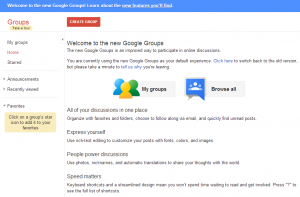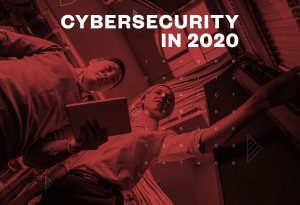What do serverless compute platforms mean for security?

By Kyle Klassen Product Manager – Cloud Native Application Security at Trend Micro
Containers provide many great benefits to organizations – they’re lightweight, flexible, add consistency across different environments and scale easily.
One of the characteristics of containers is that they run in dedicated namespaces with isolated resource requirements. General purpose OS’s deployed to run containers might be viewed as overkill since many of their features and interfaces aren’t needed.
A key tenant in the cybersecurity doctrine is to harden platforms by exposing only the fewest number of interfaces and applying the tightest configurations required to run only the required operations.
Developers deploying containers to restricted platforms or “serverless” containers to the likes of AWS Fargate for example, should think about security differently – by looking upward, looking left and also looking all-around your cloud domain for opportunities to properly security your cloud native applications. Oh, and don’t forget to look outside. Let me explain…
Looking Upward
As infrastructure, OS, container orchestration and runtimes become the domain of the cloud provider, the user’s primary responsibility becomes securing the containers and applications themselves. This is where Trend Micro Cloud One™, a security services platform for cloud builders, can help Dev and Ops teams better implement build pipeline and runtime security requirements. Cloud One – Application Security embeds a security library within the application itself to provide defense against web application attacks and to detect malicious activity.
One of the greatest benefits of this technology is that once an application is secured in this manner, it can be deployed anywhere and the protection comes along for the ride. Users can be confident their applications are secure whether deployed in a container on traditional hosts, into EKS on AWS Bottlerocket, serverless on AWS Fargate, or even as an AWS Lambda function!
Looking Left
It’s great that cloud providers are taking security seriously and providing increasingly secure environments within which to deploy your containers. But you need to make sure your containers themselves are not introducing security risks. This can be accomplished with container image scanning to identify security issues before these images ever make it to the production environment.
Enter Deep Security Smart Check – Container Image Scanning part of the Cloud One offering. Scans must be able to detect more than just vulnerabilities. Developer reliance on code re-use, public images, and 3rd party contributions mean that malware injection into private images is a real concern. Sensitive objects like secrets, keys and certificates must be found and removed and assurance against regulatory requirements like PCI, HIPAA or NIST should be a requirement before a container image is allowed to run.
Looking All-Around
Imagine taking the effort to ensure your applications, containers and functions are built securely, comply with strict security regulations and are deployed into container optimized cloud environments only to find out that you’ve still become a victim of an attack! How could this be? Well, one common oversight is recognizing the importance of disciplined configuration and management of the cloud resources themselves – you can’t assume they’re secure just because they’re working.
But, making sure your cloud services are secure can be a daunting task – likely comprised of dozens of cloud services, each with as many configuration options – these environments are complex. Cloud One – Conformity is your cloud security companion and gives you assurance that any hidden security issues with your cloud configurations are detected and prioritized. Disabled security options, weak keys, open permissions, encryption options, high-risk exposures and many, many more best practice security rules make it easy to conform to security best practices and get the most from your cloud provider services.
Look Outside
All done? Not quite. You also need to think about how the business workflows of your cloud applications ingest files (or malware?). Cloud storage like S3 Buckets are often used to accept files from external customers and partners. Blindly accepting uploads and pulling them into your workflows is an open door for attack.
Cloud One – File Storage Security incorporates Trend Micro’s best-in-class malware detection technology to identify and remove files infected with malware. As a cloud native application itself, the service deploys easily with deployment templates and runs as a ‘set and forget’ service – automatically scanning new files of any type, any size and automatically removing malware so you can be confident that all of your downstream workflows are protected.
It’s still about Shared Responsibility
Cloud providers will continue to offer security features for deploying cloud native applications – and you should embrace all of this capability. However, you can’t assume your cloud environment is optimally secure without validating your configurations. And once you have a secure environment, you need to secure all of the components within your control – your functions, applications, containers and workflows. With this practical approach, Trend Micro Cloud One™ perfectly complements your cloud services with Network Security, Workload Security, Application Security, Container Security, File Storage Security and Conformity for cloud posture management, so you can be confident that you’ve got security covered no matter which way you look.
To learn more visit Trendmicro.com/CloudOne and join our webinar on cloud native application threats https://resources.trendmicro.com/Cloud-One-Webinar-Series-Cloud-Native-Application-Threats.html
Read More HERE



